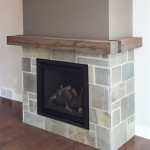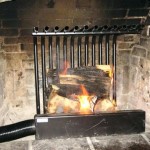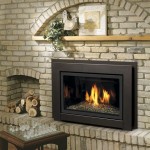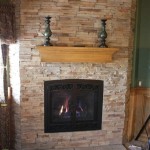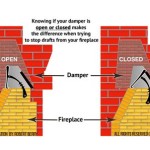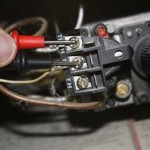Designing the Ultimate Outdoor Porch With Fireplace
An outdoor porch with a fireplace represents a significant investment in home comfort and lifestyle enhancement. It transforms a simple covered area into a year-round living space, extending the functionality of the home beyond its interior walls. Well-designed outdoor porches with fireplaces offer opportunities for relaxation, entertainment, and connection with nature, regardless of the prevailing weather conditions. The incorporation of a fireplace not only adds warmth but also serves as a focal point, creating an inviting ambiance that enhances the overall outdoor experience.
The decision to construct an outdoor porch with a fireplace requires careful consideration of various factors, including space availability, budget constraints, local building codes, and aesthetic preferences. The selection of materials, the design of the fireplace, and the integration of surrounding landscaping are all crucial elements that contribute to the success of the project. A well-planned and executed outdoor porch with a fireplace can significantly increase the value of a property, providing a return on investment that extends beyond mere financial considerations.
Planning and Design Considerations
The initial phase of creating an outdoor porch with a fireplace involves thorough planning and design. This stage defines the scope of the project and sets the foundation for a successful outcome. Consider the intended use of the porch. Will it primarily be used for casual relaxation, formal entertaining, or a combination of both? The answer to this question will influence the size and layout of the porch, as well as the type and placement of the fireplace.
Space allocation is a critical aspect of the design process. The porch should be adequately sized to accommodate the desired furniture and activities without feeling cramped. The fireplace itself will occupy a significant amount of space, so its dimensions must be factored into the overall layout. Also, consider the proximity of the porch to the house and the surrounding landscape. The porch should seamlessly integrate with the existing architecture and blend harmoniously with the natural environment.
Budgetary constraints are a practical consideration that should be addressed early in the planning process. The cost of building an outdoor porch with a fireplace can vary widely, depending on the size of the porch, the materials used, and the complexity of the fireplace design. It is advisable to obtain multiple quotes from contractors and suppliers to get a realistic estimate of the total project cost. Be prepared to make adjustments to the design if necessary to stay within budget. The budget should encompass all aspects of the project, including design fees, permits, materials, labor, and landscaping.
Compliance with local building codes and regulations is essential. Before commencing construction, obtain the necessary permits from the local authorities. Building codes are designed to ensure the safety and structural integrity of the porch and fireplace. They may specify requirements for setbacks, fire safety, and accessibility. Failure to comply with building codes can result in costly fines and delays.
The design aesthetic should complement the existing architectural style of the house. Consider the materials, colors, and textures used in the home's exterior and incorporate similar elements into the porch design. This will create a sense of visual harmony and ensure that the porch appears to be an integral part of the house, rather than an afterthought. Popular design styles for outdoor porches with fireplaces include traditional, contemporary, rustic, and coastal.
Choosing the Right Fireplace
The fireplace is the centerpiece of an outdoor porch, so selecting the right one is crucial. A range of options are available, each with its own advantages and disadvantages. Factors to consider when choosing a fireplace include fuel type, size, style, and cost.
Wood-burning fireplaces offer a classic and authentic outdoor experience. They provide the ambiance of a crackling fire and the aroma of burning wood. However, they also require a source of firewood and regular cleaning of the ash buildup. Wood-burning fireplaces are subject to local regulations regarding smoke emissions, so it is important to check with the local authorities before installing one. The design of the chimney and flue is critical for ensuring proper ventilation and preventing smoke from entering the surrounding area.
Gas fireplaces offer convenience and ease of use. They can be easily ignited with the push of a button or the flick of a switch. Gas fireplaces produce consistent heat and do not require the storage of firewood. They are available in both natural gas and propane models. Natural gas fireplaces require a connection to a natural gas line, while propane fireplaces use a portable propane tank. Gas fireplaces are cleaner burning than wood-burning fireplaces and produce fewer emissions. The installation of a gas fireplace requires the services of a qualified gas technician.
Electric fireplaces are another option for outdoor porches. They are the most environmentally friendly option, as they do not produce any emissions. Electric fireplaces are also the easiest to install, as they simply plug into a standard electrical outlet. They provide heat through an electric heating element and often feature realistic flame effects. Electric fireplaces are a good choice for porches that are not used frequently or for homeowners who prefer a low-maintenance option.
The size of the fireplace should be proportional to the size of the porch. A fireplace that is too small will be ineffective at providing heat, while a fireplace that is too large will overwhelm the space. Consider the seating arrangement and the desired heating range when determining the appropriate size of the fireplace. The style of the fireplace should complement the overall design of the porch. Options range from traditional brick fireplaces to sleek, modern stainless steel fireplaces.
Material Selection and Construction
The selection of materials is a critical aspect of building an outdoor porch with a fireplace. The materials should be durable, weather-resistant, and aesthetically pleasing. Consider the climate in the area and choose materials that can withstand the local weather conditions. Common materials used for outdoor porches include wood, stone, brick, concrete, and metal.
Wood is a popular choice for porch framing and decking. It is a natural and renewable resource that can be stained or painted to match the desired aesthetic. Pressure-treated wood is recommended for outdoor use, as it is resistant to rot and insect infestation. However, wood requires regular maintenance, such as staining or sealing, to protect it from the elements.
Stone and brick are durable and long-lasting materials that are often used for fireplace construction. They provide a rustic and traditional look. Stone and brick are resistant to fire and require minimal maintenance. However, they can be more expensive than other materials. A variety of stone and brick types are available, each with its own unique color and texture. Choosing a stone or brick that complements the surrounding landscaping can enhance the overall aesthetic of the porch.
Concrete is a versatile material that can be used for a variety of applications, including porch foundations, floors, and countertops. It is durable, weather-resistant, and relatively inexpensive. Concrete can be stained, stamped, or polished to create a variety of textures and finishes. Concrete countertops are a popular choice for outdoor kitchens and bars.
Metal is often used for fireplace components, such as chimney flues and fireboxes. It is durable and heat-resistant. Stainless steel is a popular choice for outdoor fireplaces, as it is resistant to rust and corrosion. Metal accents can also be used to add a modern touch to the porch design.
The construction of an outdoor porch with a fireplace requires the services of experienced contractors. It is important to hire contractors who are licensed, insured, and have a proven track record of building high-quality outdoor structures. Obtain multiple quotes from contractors and carefully review their qualifications and references. A detailed contract should be drawn up outlining the scope of work, payment schedule, and warranty terms.
Proper drainage is essential for preventing water damage to the porch. The porch should be sloped slightly away from the house to allow rainwater to run off. Gutters and downspouts can be installed to collect rainwater and divert it away from the foundation. A well-drained foundation will help to prevent moisture from seeping into the porch and causing structural damage.
The electrical wiring for the porch should be installed by a qualified electrician. Electrical outlets should be installed to provide power for lighting, appliances, and other electronic devices. The wiring should be properly grounded to prevent electrical shocks. Outdoor-rated electrical fixtures and receptacles should be used to protect them from the elements.
Furnishing and Decorating Your Outdoor Porch
Once the porch and fireplace are built, the next step is to furnish and decorate it. The furniture and décor should be comfortable, stylish, and functional. Consider the intended use of the porch and choose furniture that is appropriate for the space. Popular furniture options for outdoor porches include sofas, chairs, tables, and benches.
Outdoor furniture should be made from durable, weather-resistant materials. Teak, cedar, and aluminum are popular choices for outdoor furniture. Cushions and pillows should be made from fade-resistant and water-resistant fabrics. Covers can be used to protect the furniture from the elements when it is not in use.
Lighting is an important element of outdoor porch design. It can create a warm and inviting atmosphere and improve safety. Options include string lights, lanterns, sconces, and recessed lighting. Consider using dimmable lights to adjust the brightness to suit the mood. Solar-powered lights are a good option for reducing energy consumption.
Landscaping can enhance the beauty of the outdoor porch and blend it seamlessly with the surrounding environment. Plant flowers, shrubs, and trees around the porch to create a lush and inviting space. Consider using potted plants to add color and texture. A well-designed landscape can provide shade, privacy, and visual interest.
Accessories can add personality and style to the outdoor porch. Consider adding rugs, throw blankets, pillows, and artwork to create a comfortable and inviting space. Outdoor rugs can define the seating area and add warmth. Throw blankets and pillows can provide extra comfort on cool evenings. Artwork can add a personal touch and reflect the homeowner's style.
An outdoor porch with a fireplace offers a unique opportunity to create a relaxing and inviting outdoor living space. By carefully planning the design, choosing the right fireplace, and selecting durable materials, homeowners can build a porch that will provide enjoyment for many years to come. The addition of comfortable furniture, stylish lighting, and lush landscaping can transform an ordinary porch into an extraordinary outdoor retreat.
:max_bytes(150000):strip_icc()/bring-holidays-outside-x-50f80e4865984b36b603a1de82d2938b.jpg?strip=all)
23 Outdoor Fireplace Ideas For A Glowing Retreat

A Fireplace Porch Dream House Outdoor Rooms Design

Warm Up Your Outdoor Area With A Fireplace Coogans Design Build

Home Is Where The Hearth With An Outdoor Fireplace Rockhaven Homes

30 Outdoor Fireplace Ideas Cozy Fireplaces

30 Outdoor Fireplace Ideas Cozy Fireplaces

Noteworthy Details Usher In Fall With Covered Porches Outdoor Fireplaces

Outdoor Fireplace Design Ideas Judd Builders Asheville Nc

Amazing Fire Pit Outdoor Fireplace Ideas Natural Brick Stone Depot

Outdoor Fireplace Ideas Inspiration Dutchies Stoneworks
Related Posts

